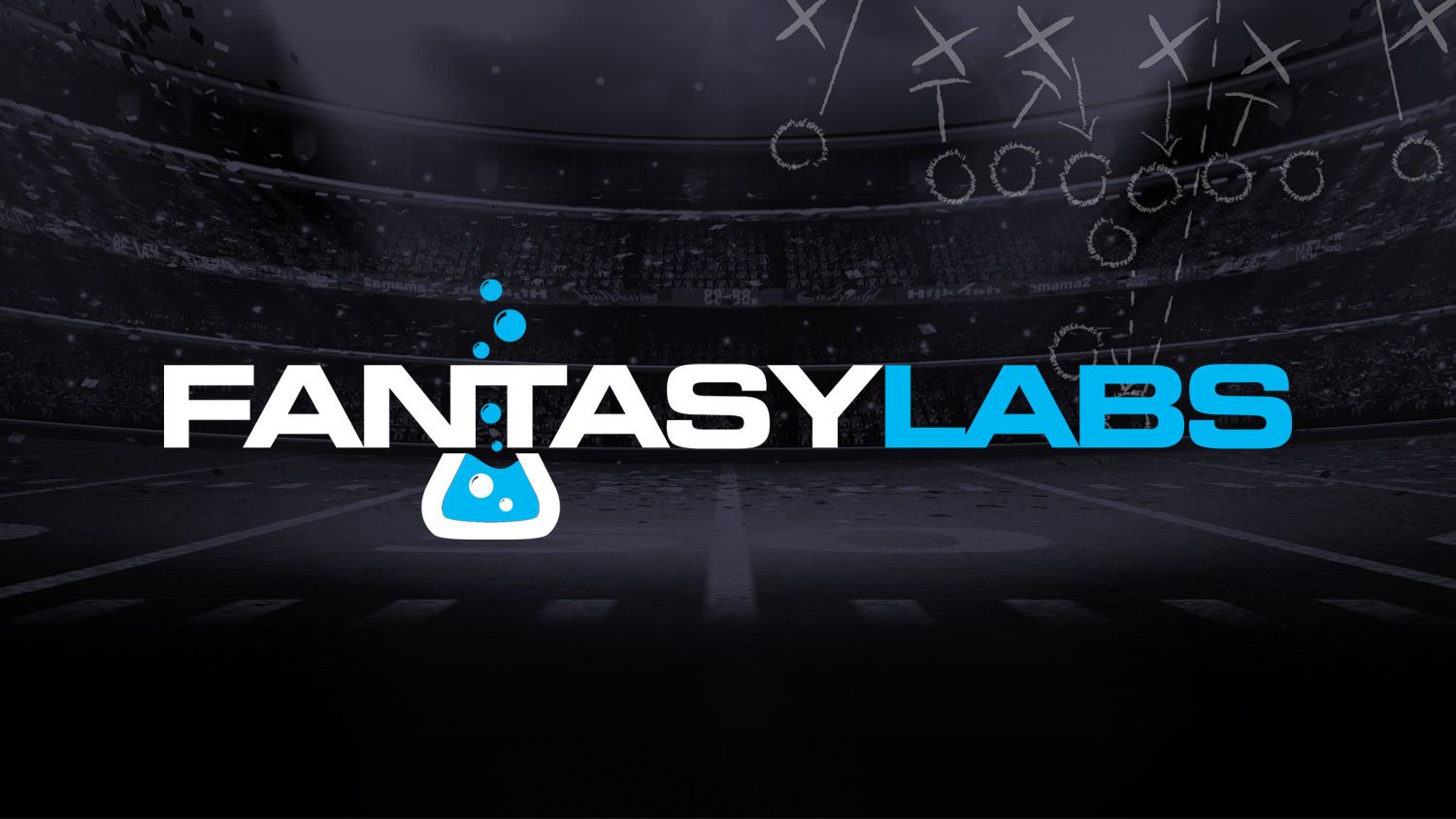As DFS players, we spend most of our time looking forward to the next slate, the next season, etc. Equally important, though, is looking back. Figuring out the thought process that leads to winning lineups is crucial. That’s what makes us better players long term.
Each week in 2022, I’ll look at the winning lineup in DraftKings Millionaire Maker Contest with an eye for how the lucky winner arrived at the lineup that took it down. Rather than going through every position, we’ll focus on key lessons that can be learned — and maybe even some mistakes worth avoiding.
While a high degree of positive variance is necessary to win a contest of this size (the standard $20 contests have over 236,000 entrants, there’s still a large amount of skill involved to get to a position to benefit from that variance.
Here’s Week 9’s winner:

The Lineup
csears175 is this week’s winner, taking down the contest with a portfolio of 35 lineups. Their exposures were pretty tight, taking a stand on a handful of players/games in order to capitalize if those took off. We’ll touch on their overall exposures to the players in this lineup using the FantasyLabs Contest Dashboard Tool.
The Stack
The Bears offense has really turned a corner lately, enough so that csears175 decided to roll with Justin Fields in over 30% of their entries. That in and of itself wasn’t noteworthy — Fields was extremely cheap and a popular cash game option.
What was noteworthy was the decision to double stack Fields. With running quarterbacks, single stacks and naked builds are generally better options — but also carry higher collective ownership. Pairing Fields with not one but two of his pass catchers certainly had much lower ownership as a group.
First was Darnell Mooney. Mooney was a major touchdown regression candidate coming into the game, with 25 catches for 364 scoreless yards prior to Week 9. He had also drawn 23 targets over the last three weeks, with a role that seemed to be expanding. All of that for less than $5,000 made him a solid choice.
Cole Kmet stood out less for his own merits, but it was an incredibly weak slate for tight ends. With no obvious options, rostering the $3,000 tight end attached to your quarterback makes plenty of sense. With cheap tight ends, we’re always a touchdown or two away from breaking the slate — which is exactly what Kmet did. He found the end zone twice, putting up 22 points.
Of course, bringing it back with Tyreek Hill was a no-brainer. All of the cheap Bears options made affording him easy, and Hill stood out as the top raw wide receiver plays on the slate. Coupled with his always elite ceiling, he was a great option as a bring-back in this game.
csears175 also paired Rhamondre Stevenson with New England. Stevenson was projecting as one of the best — and chalkiest — plays on the slate with Damien Harris out. Leaning into that by pairing him with his less popular defense allowed csears to create some leverage and correlation for himself. New England’s price tag kept their ownership down, but they were in a great spot against the Sam Ehlinger-led Colts.
The Chalk
The most impressive part of csears175’s build was how it created leverage around its chalk. Fields, Stevenson, and Hill, were all among the slate’s most popular plays. In each of those cases, this lineup found a way to utilize them in a way that most of the field did not.
Beyond that, Kenneth Walker and Joe Mixon were both somewhat popular options. Neither were the most popular choices, though. Outside of Stevenson, there were a handful of other backs that were more highly owned. This is important to be aware of on slates with a lot of strong plays at a position.
Mixon and Walker were projecting as slightly less strong options than, say, Travis Etienne. Both were within a point or two, though. In situations like that, it’s essentially a coin flip who ends up as the higher-scoring option. That makes taking the lesser-owned player almost always +EV.
We don’t need to go too far off the board — especially at running back, where we can reasonably expect projections to be fairly accurate. However, sacrificing a small amount of projected points for a large amount of uniqueness is worth considering.
The Sleepers
The only player we’ve yet to discuss from this lineup is Christian Kirk, who checked in at 10% ownership. Not exactly a sleeper, but just outside of the top 10 players at his position. Kirk was projecting as a relatively strong points-per-dollar play, and my guess is he was included because he fit the salary cap more so than any huge desire to play Kirk specifically.
His 21.6-point performance was very strong but not exactly a must-have, given his price tag. That’s a good reminder that not every play needs to have a massive ceiling — some just need to have a strong floor.
While we already touched on it, I’d be remiss if I didn’t again point out the defense selection. New England was a home favorite, in a game with a 40-point total, against a backup quarterback. They were a great play regardless of salary and paid off for the small number of lineups that found the salary to get to them.









